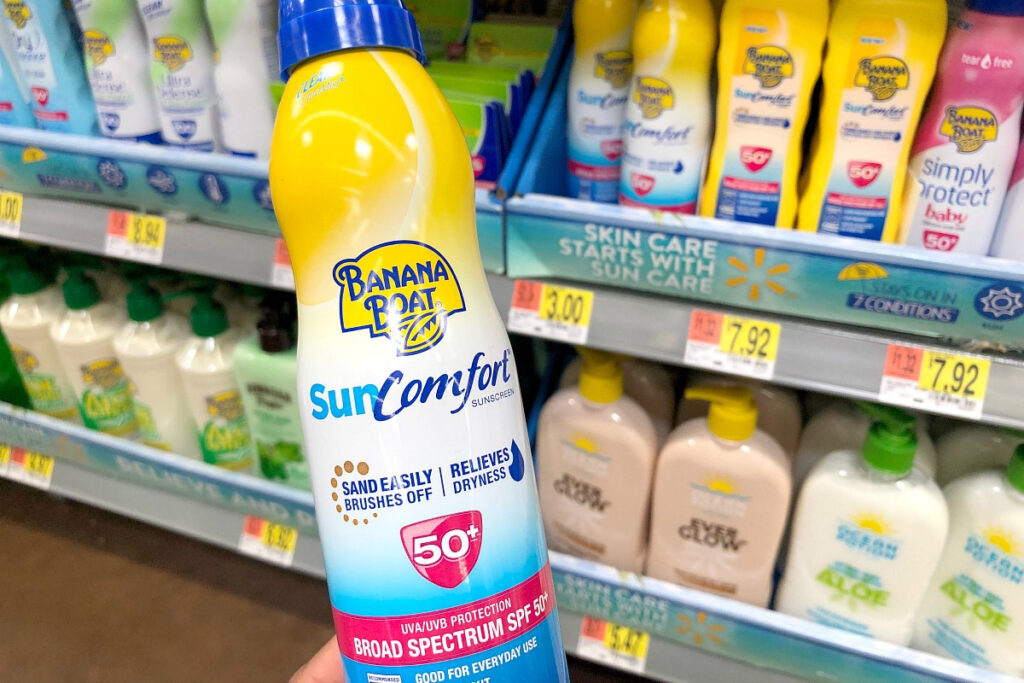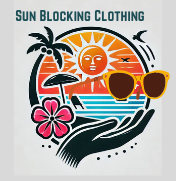
Why do European beachgoers enjoy safer sunscreens? Aren’t they all kind of the same?
Why are the European people using a different kind? What is the whole story?
After more than 10 years, the FDA still won’t allow new sunscreens.
Evan an act of Congress didn’t move sun filters closer to approval.
In 2015, Marc S. Reisch shared a version of this story in Sun Kissed, Sun Worshippers at the Beach. (Volume 93, Issue 20)
European beachgoers have access to the benefit of many more sun-filtering molecules to protect them from harmful ultraviolet light.
Summer is the time when we have the more dangerous direct sun. And we, here in the U.S. are no closer to benefiting from those advanced sunscreen active ingredients.
No closer than we were 10 years ago.
European outdoors lovers, meanwhile, can enjoy the sun knowing they have access to newer and highly effective sunscreens.
European or US Sunscreens
Europeans have access to sunscreen that will give better protection from ultraviolet (UV) rays that cause sunburn.
These rays not only cause sunburn but also contribute to wrinkling. And these rays are also increasing rates of skin cancer.
U.S. consumers don’t have access to eight advanced European sun-filtering molecules! Why? Because the Food & Drug Administration is not convinced they are safe for users.
Chemical and cosmetics industry executives claim that the US population is being denied protection that is potentially lifesaving.
Despite legal efforts to break the stalemate, the disagreement could go on for many more years.
How US Sunscreen Works
The active ingredients protect users against UV-B rays. Some rays have wavelengths between 290 and 320 nm. These are the primary culprits of sunburn.
Some ingredients can also protect against UV-A rays in the 320 to 400 nm range.
These are the rays that can penetrate more deeply into the skin and cause cancer.
The FDA’s current list contains 16 approved sunscreens. However, just eight of them are regularly used. And only two offer good UV-A protection.
The eight ingredients that provide protection in our sunscreens include:
Oxybenzone
Avobenzone
Octinoxate
Octisalate
Homosalate
Octocrylene
Titanium dioxide
Zinc oxide
To filter the UV-A rays from your skin avobenzone and zinc oxide are used. This is also a good UV-B filter.
However, sunscreens with these 2 ingredients are least favored by the sun-loving public because they are heavy and often can be seen on the skin.
The ingredients that prevent early aging are often bypassed, not because they don’t protect, but because they are more difficult to rub in to get the protection.
There are other sunscreens on the FDA list that are no longer used because they have an unpleasant feel, irritate skin, or are no longer made.
Just A Word About European Sunscreens

European regulators do have a reputation for being more cautious about human exposure to chemicals than their U.S. colleagues. Yet, they allow many more sunscreens formulas.
The European Union maintains a list of 27 sunscreen molecules, which, like the FDA-approved sunscreens, are subject to safety testing and maximum dosage restrictions.
The Sunscreen Dilemma
We have unequal access.
European beachgoers benefit from a wider range of sun-filtering molecules that offer better protection against harmful sun rays.
These ultraviolet rays are responsible for sunburn, skin aging, and skin cancer.
FDA’s Reason for Caution:
The FDA classifies sunscreens as drugs, creating a stricter approval process for new ingredients. The FDA remains unconvinced of the safety of certain molecules.
Industry Perspective:
Chemical and cosmetics industry executives argue that denying access to advanced sunscreens may be denying people lifesaving protection. Important protection from skin damage and cancer.
The current FDA-approved list includes only 16 sunscreens, with just two providing good protection against UV-A rays that can cause cancer.
The fact that we are now aware of the dangers of the sun makes us aware of what we can do to keep ourselves safe from too much sun.
This makes the practical aspect of a sun blocking hat, sunglasses, and a long-sleeve loosely-fitting shirt of tightly woven fabric an easier thing to understand.
Don’t settle for sunscreen alone. Layer your skin protection from the sun for better coverage and to reduce your risk of skin cancer.
A Little Prospective
European manufacturers can mix their formulas and combine sunscreens without restriction.
U.S. counterparts have less freedom to mix ingredients to provide the level of sun protection promised on the bottle.
Eight of Europe’s sunscreens have been submitted to the FDA for approval. Four of those formulas would provide skincare manufacturers with more tools against the more dangerous UV-A rays.
All eight formulas would increase UV-B protection.
Because of their greater effectiveness, most would also allow manufacturers to decrease the amount of ingredients they must add. The ingredients that make sunscreens more spreadable.
This would result in less goopy sunscreen products that leave the skin feeling clear, and less coated.
The new sunscreens could also revive the U.S. retail sunscreen market. The European market is about twice the size of the US market.
Some of the compounds have been waiting for an FDA response since 2002.
Even the Environmental Working Group, (EWG) which is often an antichemical advocacy organization, backed the passage of the law.
Slow Response Results in Delay
The EWA backed the bill, but the group did question the safety of some of the ingredients that offered mostly UV-B protection. There are still some chemicals that can cause cancer in some used in the formula.
Remember UV B rays cause sunburn faster and UVA rays cause early skin aging.
This group did endorse the UV-A filters that we used in the formulas for sunscreen.
The law was a response to an approval process that has origins in a late-1970s decision by FDA to regulate sunscreens as over-the-counter (OTC) drugs subject to dosage and labeling restrictions.
When sunscreen labels started stating that they could prevent cancer, the FDA upped the requirements for the ingredients. This shifted sunscreen from the cosmetic world to the world of medications.
The proposed new molecules are subject to a higher degree of safety scrutiny than if they were regular cosmetics ingredients.
To ease the process, in 2002 FDA established what it called Time and Extent Applications, or TEAs.
If a sunscreen ingredient can prove a five-year history of extensive and safe OTC use in another country, that would make it eligible for a fast-track.
This fast-track application process could speed up their listing on the FDA’s list.
Until such time we have access to better sunscreen, sun blocking clothing will keep you safe. In fact, Skin Cancer.org reports that clothing is the better way to protect our skin.
Using sunscreen to cover those parts of your body that are not covered with UPF clothing will give you better protection from the sun.
What Actually Happens
The agency set up a plan for a yes or no answer in 180 days.
But by 2013, six of the companies that had submitted TEAs between 2002 and 2009 had heard little from FDA.
Becoming frustrated, a group of sunscreen makers joined with cancer prevention organizations, sunscreen formulators, and consultants to get Congress to help them.
The so-called Public Access to SunScreens (PASS) coalition lobbied Congress and succeeded in getting the Sunscreen Innovation Act passed into law.
The law had an effect but not the way its backers had hoped.
Even before it passed, FDA began rejecting the TEAs, and by February it had rejected all eight.
The law didn’t tell FDA to approve the eight molecules in limbo, points out cosmetics consultant and chemist David Steinberg:
“Rather, it only directed the agency to respond to the applications.”
In each case, FDA asked the makers for more studies that would rule out dangers from chronic exposure, especially for pregnant women and children.
“The FDA,” Steinberg contends, “is bogged down in minutiae because they are overly concerned with sunscreens as drugs.”
Nadim A. Shaath, a chemist who heads Alpha Research & Development, a cosmetics consulting firm, agrees. He says:
“If we do not change a fundamental mindset at the FDA, I am afraid that no new UV filters will ever be introduced into the U.S.
What Will It Take?
A fundamental mindset change will be needed. The lengthy, tedious, and expensive process to apply for approval will block any new sunscreen ingredients.
In a February posting on the FDA’s website, Theresa M. Michele, director of the FDA’s Division of Nonprescription Drug Products, explained the agency’s position:
“We need more data to decide if these ingredients are, in fact, generally recognized as safe and effective for use in OTC sunscreen products.”
Michele acknowledged confusion about why ingredients on the market for years in other countries still can’t be used in the U.S.
For the FDA, the reasons are clear:
Director Michele continues: “Marketing history information submitted through TEAs was limited.”
“For example, such information doesn’t tell us anything about the long-term effects of the use of the ingredients. Or how much is absorbed.”

No Progress
For more than ten years, the U.S. has been unable to access the latest advancements in sunscreen technology.
By slow actions, it seems the FDA is leaving consumers with limited protection against harmful UV rays.
European beachgoers enjoy a wider range of sunscreen ingredients because they are considered cosmetics rather than drugs.
This makes a discrepancy in access to effective sun protection.
The FDA’s cautious approach and strict regulations have resulted in delays and a lack of approval for advanced sun-filtering molecules, despite efforts by Congress to address the issue.
To bridge the gap to resolving this stalemate it seems that more effort to provide the FDA the information it needs is important.
Comprehensive and long-term safety data is important for the sunscreen ingredients, addressing their concerns about potential risks. Why do Europeans have safer sunscreen may remain a question.
I don’t know the answer myself, but I do want to feel safe when I apply sunscreen. We will have to stay alert to see if there is any action on this sunscreen safety process.
My Review of The Sunscreen Innovation Act
The Sunscreen Innovation Act:
- Passed in 2014: Signed into law by President Barack Obama, the Sunscreen Innovation Act aimed to address the U.S. sunscreen shortage and directed the FDA to review applications for the eight European sunscreen molecules.
- FDA’s Response: The FDA rejected all eight applications, requesting additional studies to rule out potential dangers from chronic exposure, particularly for pregnant women and children.
- Challenging the Approval Process: The PASS coalition, comprising sunscreen manufacturers, cancer prevention organizations, formulators, and consultants, lobbied Congress for the Act. However, the Act did not guarantee approval of the sunscreen ingredients but merely required the FDA to respond to the applications.
The FDA’s Concerns:
- Minutiae and Overcaution: Critics argue that the FDA’s stringent approach is overly concerned with treating sunscreens as drugs, leading to delays and unnecessary scrutiny.
- Need for Additional Data: The FDA contends that more data is required to determine whether the sunscreen ingredients are generally recognized as safe and effective for OTC sunscreen products.
- Limited Marketing History: The FDA points out that the information submitted through TEAs lacked sufficient data on the long-term effects and absorption rates of the sunscreen ingredients.

Sami’s Take on “Why Do European Beachgoers Enjoy Safer Sunscreens”
Conclusion: Despite the passage of the Sunscreen Innovation Act, the U.S. is still awaiting.
We still do not have access to advanced sunscreen ingredients that have been safely used in Europe for years.
The discrepancy in regulations between the FDA and European regulators has hindered progress, leaving American consumers without the latest and most effective sun protection options.
Opening this market for U S residents to better sunscreen will require collaborative efforts. From the manufacturers to address safety concerns. And timely approval of beneficial sunscreen ingredients
For more than a decade, the FDA’s cautious approach to sunscreen approval has hindered the availability of advanced sun-filtering molecules in the U.S.
This is leaving consumers with limited options for protection against harmful UV rays.
While European beachgoers benefit from a broader selection of sunscreens, the FDA’s strict classification of sunscreens as drugs continues to impede progress.
Resolving this stalemate remains uncertain, potentially prolonging the delay for many more years.
Even with an improved sunscreen to use, sun blocking clothing is still the best protection against the sun’s rays. As we are waiting to get better sunscreen access, be sure and use clothing to cover your skin.
Now that you know, you can do a better job of protecting your skin from sun damage.
Thank you,
Sami
